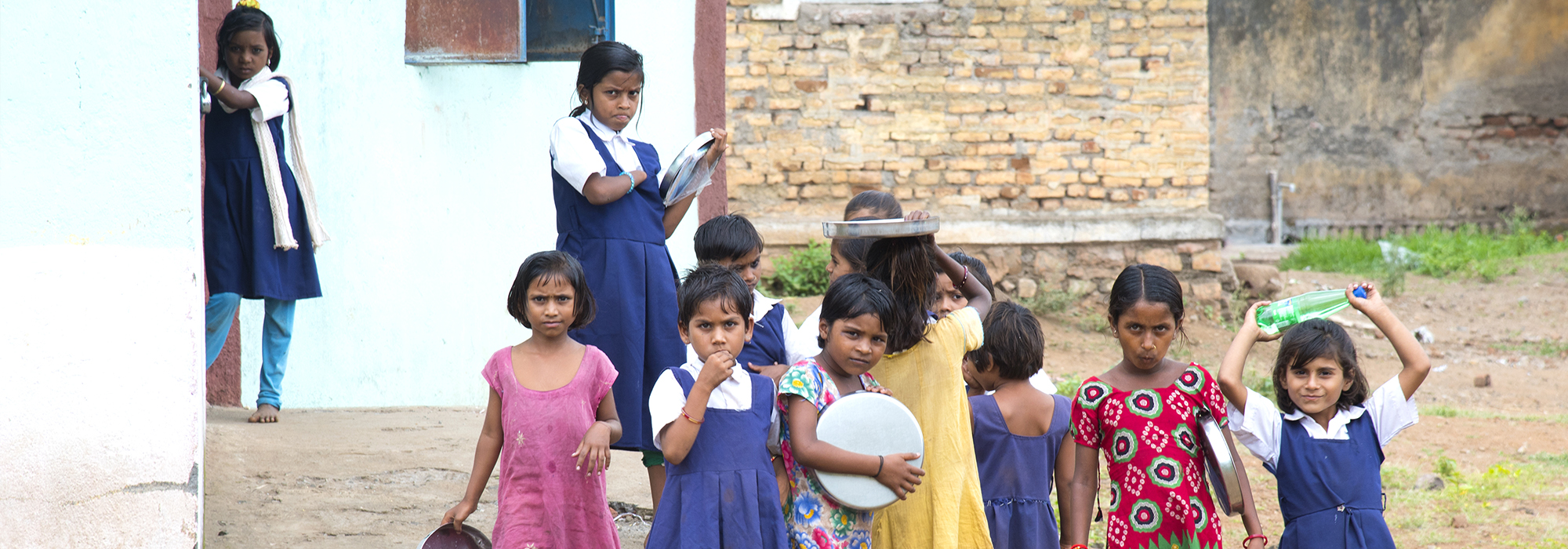
For the first time ever, nearly half the world’s school children in low and middle-income countries will today sit down to eat a school meal. That is 310 million children. According to an ongoing analysis we are undertaking with the Partnership for Child Development, India now feeds more than 100 million children; Brazil 48 million; China 44 million; and South Africa and Nigeria each feed more than 9 million of their children. These meals are provided not once, but every day of the school year, and in all of these countries half of the children fed are girls.
What has convinced so many countries to make such a significant investment? They recognize that the new generation of school feeding programs yields high returns in four important areas: human capital – the sum of a population’s health, skills, knowledge and experience; safety nets for poor children and their families; local economies, especially the earning power of women; and in the area of peace-building, community resilience and preventing future conflict.
Still, hundreds of millions of children in the poorest countries don’t have access to school feeding programs. More international investment is needed to support these vital programs.
An essential investment in people
The World Bank estimates that 70 percent of the wealth of rich countries is a result of the productivity of their people: their human capital. In poor countries this contribution is only 40 percent, which means that these countries are missing out on the potential productivity of their populations and their people are not getting the chance to achieve their full potential.
A prime reason for this disparity is that while poor countries globally invest some US$210 billion annually in educating their children, they only invest about US$4 billion in their children’s health and nutrition. Yet sick children don’t attend school, and hungry children don’t learn: we need to match the investment in teachers and schools by also investing in the students themselves. Estimates suggest that school meal programs would leverage the available investment in education by a ratio of some 21:1.
And the greatest benefits would be in girls’ education. Feeding girls throughout childhood and adolescence nourishes their bodies and their minds. It also provides a strong incentive to families to send their girls to school. A recent World Bank report, launched in partnership with the Malala Fund, shows that if all girls completed secondary school, women and girls could add up to US$30 trillion to the global economy.
An essential safety net for poor children and their families
One of the ways low- and middle-income countries responded to the 2008 financial crisis was by expanding children’s school meals programs. This is still true today, as seen in the scale-up of programs to meet the needs of children in countries affected by conflict, such as Syria, Yemen, and South Sudan. This is because school meals reach into the heart of poor communities and benefit children directly. Also, the food provided is seen by families as having real value, often substituting for around 10 percent of the family income for every child fed throughout the year.
When social shocks and disasters occur, school meals provide a strong incentive for families to keep sending their girls to school rather than taking them out to work or to engage in other activities, often harmful. Helping girls stay in school, especially into adolescence, is an effective way of preventing early marriage and of delaying first pregnancy, both of which can trap women into poverty and chronic ill health.
An investment in the local economy
School meals demand large scale and regular supplies of food, which is an opportunity to increase local spending. The Nigeria Home Grown School Feeding Programme, for example requires 6.8 million eggs, 70 tonnes of farmed fish and commensurate amounts of pulses and vegetables every week, nearly all of it produced in the area where the children who will consume the food live. In Syria, all the snacks distributed in the schools are procured and produced locally.
Linking local production to local consumption creates a stable and predictable market for local farmers, especially smallholder farmers, some 70 percent of whom are women and the mothers of the children who are being fed. This injects money into the local rural economy and stimulates the incomes of women farmers.
There are also business opportunities for women. In Nigeria, some 95,000 women who relied previously on precarious local markets for their income can now count on steady incomes as caterers for the school feeding programme and often to earn extra income catering community events.
These school meal programs are especially critical for children who live in areas of fragility, conflict and violence. Globally, around a half a billion people live in conflict zones and suffer from hunger. Even in informal educational settings, these programs meet basic hunger needs and protect the future of the world’s most vulnerable children. They can help stabilize and rebuild communities affected by conflict or emergencies, as well as preventing child marriages, teen pregnancies and the human rights violations that arise in conflicts. Even if only some of the consequences of war are mitigated, school meals are an important investment.
World must do more to ensure the most vulnerable have access to school meals
All of these benefits derive from providing food to schoolchildren. Each program represents significant returns, which is why school meals have emerged over the last 10 years as one of the fastest growing areas of investments by national government in low-income populations. They are supported by countries like Canada, countries that have invested US$177 million in school feeding programs in the last five years.
But the investment is not growing fast enough for the most vulnerable children in the worst affected countries. National governments have made huge strides in creating their own programs, but some of the poorest and most fragile countries have fallen behind. The World Food Programme estimates that some 73 million of the worst affected children are not yet being reached. Based on current progress, this gap is unlikely to be closed anytime soon. Yet these countries could catch up if the world made an additional annual investment of US$4.6 billion in support of national government-led school meal programs. Funds should come from national budgets, donor bilateral grants, donor multilateral grants, other innovative financing facilities, as well as the private sector.
When you consider the trillions to be gained from girls’ education, this is a remarkably smart investment in the future of the world. Of course the benefits would go to girls and boys, but for vulnerable and disadvantaged girls, transformative school meal programs can be a game-changer.
Photo: Shutterstock, by CRS PHOTO
Do you have something to say about the article you just read? Be part of the Policy Options discussion, and send in your own submission. Here is a link on how to do it. | Souhaitez-vous réagir à cet article ? Joignez-vous aux débats d’Options politiques et soumettez-nous votre texte en suivant ces directives.











